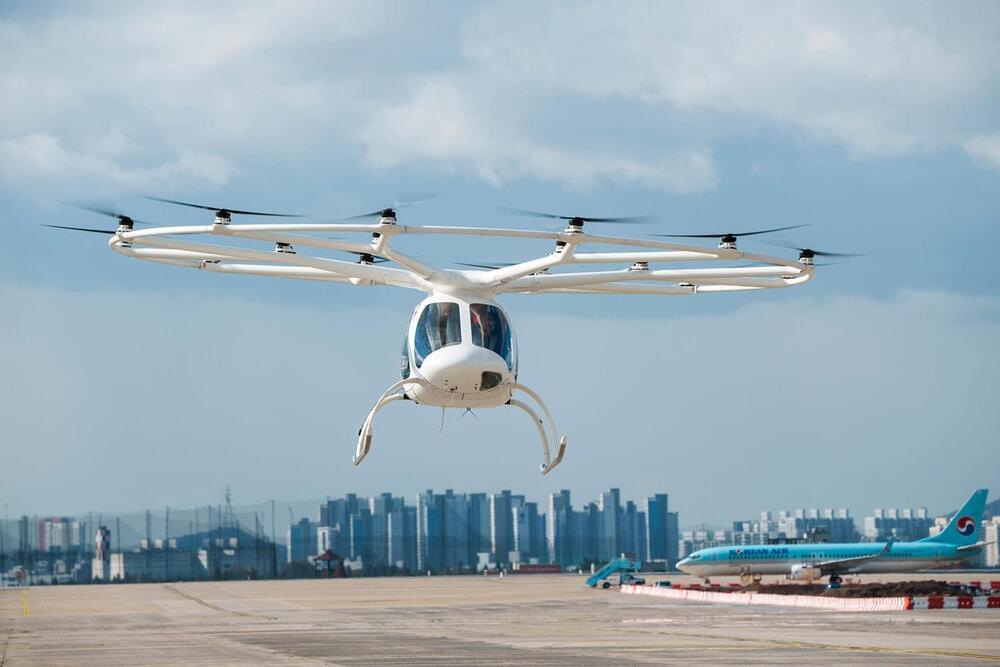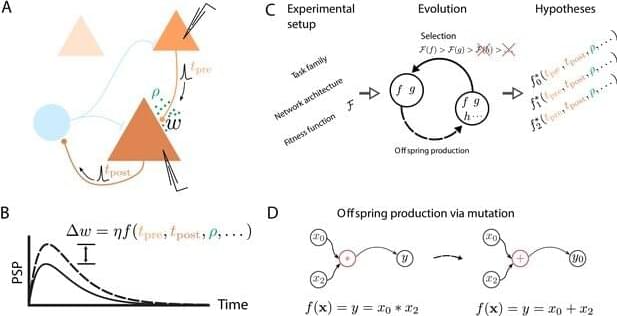The Hardware Giant NVIDIA is now working on one of the craziest projects I’ve ever seen. They’re attempting to build the fastest supercomputer ever made in hopes of simulating the entire earth in real time for climate research and potentially even more. They call this super computer Earth 2 and it’s going to feature their most powerful next generation GPU’s in the world. It’ll feature multiple exaflops of performance and be supported by the government. I can’t wait to see how this crazy project works out. It was announced by Jensen Huang at NVIDIA GTC 2021.
–
TIMESTAMPS:
00:00 The Simulation Hypothesis.
01:29 What is Nvidia attempting to do?
03:10 What are supercomputers usually used for?
05:54 What is NVIDIA doing differently now?
07:02 Last Words.
–
#nvidia #gtc #supercomputer
Get the latest international news and world events from around the world.

Psilocybin Found To Rapidly Improve Depressive Symptoms In Patients During ‘Groundbreaking’ Clinical Trial
𝐏𝐬𝐢𝐥𝐨𝐜𝐲𝐛𝐢𝐧 𝐅𝐨𝐮𝐧𝐝 𝐓𝐨 𝐑𝐚𝐩𝐢𝐝𝐥𝐲 𝐈𝐦𝐩𝐫𝐨𝐯𝐞 𝙍𝙖𝙥𝙞𝙙𝙡𝙮 𝙄𝙢𝙥𝙧𝙤𝙫𝙚 𝘿𝙚𝙥𝙧𝙚𝙨𝙨𝙞𝙫𝙚 𝙎𝙮𝙢𝙥𝙩𝙤𝙢𝙨 𝙄𝙣 𝙋𝙖𝙩𝙞𝙚𝙣𝙩𝙨 𝘿𝙪𝙧𝙞𝙣𝙜 ‘𝙂𝙧𝙤𝙪𝙣𝙙𝙗𝙧𝙚𝙖𝙠𝙞𝙣𝙜’ 𝘾𝙡𝙞𝙣𝙞𝙘𝙖𝙡 𝙏𝙧𝙞𝙖𝙡
𝙄𝙩 𝙩𝙪𝙧𝙣𝙨 𝙤𝙪𝙩 𝙩𝙝𝙖𝙩 𝙜𝙞𝙫𝙞𝙣𝙜 𝙥𝙨𝙞𝙡𝙤𝙘𝙮𝙗𝙞𝙣, … See more.
Compass Pathways, a U.K. based clinical stage company that is developing a patented form of psilocybin to be used in conjunction with therapy, reported promising results from its much-anticipated phase two b clinical trial this week. The study found that patients who took a single psychedelic dose of psilocybin, 25 milligrams, in conjunction with therapy reported almost immediate and significant reduction in depressive symptoms that lasted weeks compared with patients who were given a 1 milligram dose, which is so low it’s essentially a placebo.
Twenty-nine patients, or 36.7%, who took the 25 mg dose showed a 50% or more reduction in symptoms in three weeks after the single dose and again at three months, compared with the patients who took the placebo. Nineteen patients, or 24.1%, who took the highest dose were still in remission three months later, compared with 17.7% after three weeks and 10.1% after three months in the 1 mg group.
George Goldsmith, who cofounded Compass Pathways with his wife and medical doctor Ekaterina Malievskaia and Lars Christian Wilde, says that when they saw the positive results, they realized they were “groundbreaking.”

Volocopter performs first crewed public test flight in South Korea
German urban air mobility (UAM) company, Volocopter, has completed the first-ever crewed public test flight with its 2X aircraft in Seoul, South Korea.
During the 5-minute test flight that took place at Gimpo International Airport in Seoul, the fully electric two-seater air taxi covered a distance of approximately 3 km (2 miles), reached a maximum altitude of 50 meters and maximum speeds of 45 km/h (28 mph). The test flight was part of South Korea’s Minister for Land, Infrastructure, and Transport’s (MoLIT’s) UAM demonstration event – ‘Open the Urban Sky.’
Seoul is now the second city in Asia where Volocopter has conducted test flights of its air taxi, following the first successful public flight trial over Singapore’s Marina Bay area in 2019.


Apple’s Increasing Focus on Health Seen in Recent Hiring Trends, New Board Member
Apple has been talking for years about the role it wants to play in human health, led by the Apple Watch and its array of health-related features. With the Apple Watch maturing and Apple increasing its integration of health-focused hardware and software, several pieces of evidence suggest the company is positioning itself for an even bigger expansion in that direction.
According to trends compiled by Linkedin and seen by MacRumors, over the past year, Apple’s open job listings in health-related fields have increased by over 220%, with a significant portion of the increase coming in just the last several months. Apple’s health-focused hiring has been the fastest-growing segment for the company over the past year, followed most closely by sales and IT specialists, such as in cloud computing and security, according to the data.
Hyundai’s new Supernal to lead charge into AAM future
South Korean transportation giant Hyundai has announced the creation of an advanced air mobility (AAM) company, Supernal LLC. The company will pursue the development of next-generation passenger electric vertical takeoff and landing (eVTOL) vehicles, and aims to conduct its first commercial flight in 2028.
“We’re developing a commercially viable Advanced Air Mobility product from the start, designing and manufacturing our vehicle to the highest safety, noise, efficiency, and affordability standards,” said Ben Diachun, Supernal’s chief technology officer. “Our growing team, which includes veterans of aerospace, automotive, and other deep-tech industries, is engineering sustainable vehicles that have the potential to evolve how we live, work, and play.”
In Astonishing Feat, a New Drug Reversed Paralysis in Mice With Spinal Cord Injury
US scientists have developed a new form of drug that promotes the regeneration of cells and reversed paralysis in mice with spinal injuries, allowing them to walk again within four weeks of treatment.
The research was published in the journal Science on Thursday, and the team of Northwestern University scientists behind it hope to approach the Food and Drug Administration (FDA) as early as next year to propose human trials.
“The aim of our research was to develop a translatable therapy that could be brought to the clinic to prevent individuals from becoming paralyzed after major trauma or disease,” Northwestern’s Samuel Stupp, who led the study, told AFP.
Engineers design Autonomous Robot that can Open Doors, find Wall Outlet to Recharge
Engineering students have designed an autonomous robot that can find and open doors in 3D digital simulations. Now they’re building the hardware for an autonomous robot that not only can open its own doors but also can find the nearest electric wall outlet to recharge without human help.
One flaw in the notion that robots will take over the world is that the world is full of doors.
And doors are kryptonite to robots, said Ou Ma, an aerospace engineering professor at the University of Cincinnati.


Algorithms mimic the process of biological evolution to learn efficiently
Uncovering the mechanisms of learning via synaptic plasticity is a critical step towards understanding how our brains function and building truly intelligent, adaptive machines. Researchers from the University of Bern propose a new approach in which algorithms mimic biological evolution and learn efficiently through creative evolution.
Our brains are incredibly adaptive. Every day, we form new memories, acquire new knowledge, or refine existing skills. This stands in marked contrast to our current computers, which typically only perform pre-programmed actions. At the core of our adaptability lies synaptic plasticity. Synapses are the connection points between neurons, which can change in different ways depending on how they are used. This synaptic plasticity is an important research topic in neuroscience, as it is central to learning processes and memory. To better understand these brain processes and build adaptive machines, researchers in the fields of neuroscience and artificial intelligence (AI) are creating models for the mechanisms underlying these processes. Such models for learning and plasticity help to understand biological information processing and should also enable machines to learn faster.